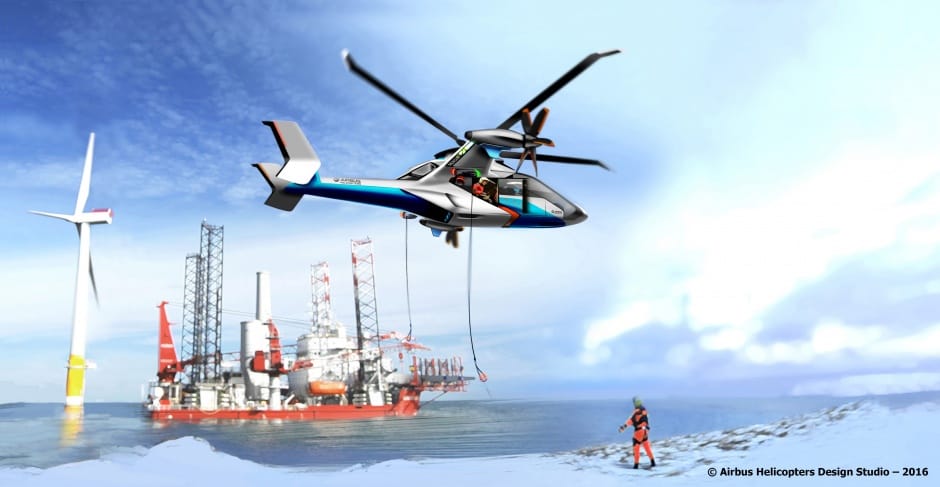
Helicopters are sometimes seen as the poor relation of the aerospace sector. While attention is lavished on fast jets and commercial airliners, helicopters clatter along, fulfilling their role as workhorses of the military and emergency services, pretty much taken for granted. Certainly, The Engineer has not covered helicopters in as much detail as other types of aircraft over the past decade.
This perception is, of course, wrong. Possibly the most complex of flying machines – at least in terms of their mechanics and aerodynamics, not to mention the difficulty of actually flying them – helicopters are subject to just as much development and innovation as any other aircraft. An ambitious project by Airbus to make a fast helicopter demonstrates differences and similarities between rotorcraft – as they are called in the sector – and conventional fixed-wing aircraft.
The new craft, whose design was frozen last summer ahead of its construction phase starting this year, is intended as a “mission demonstrator”: roughly one step ahead of a prototype but not yet a model for a production aircraft. It was designed as part of Airbus’s commitment to Clean Sky 2: a major European Union project to develop aircraft with reduced impact on the environment in terms of their fuel consumption, carbon emissions (these two are, of course, linked) and noise. Because of this, it is generally known simply as the Clean Sky 2 rotorcraft.
Speed is a particular problem for helicopters, because of the way they fly. It is easiest to understand this if the rotor of a helicopter is viewed as a set of rotating wings. These generate lift when air is moving over them because of their aerofoil shape. The blades only produce equal amounts of lift in still air; when there is any wind blowing, the blade moving forwards generates more lift than the blade moving backwards (known as advancing and retreating blades), and the movement of the helicopter through the air, of course, also generates this effect. The faster the helicopter moves forward, the greater the difference between the relative speeds of the advancing and retreating blades. At a certain airspeed, this difference becomes so great that the retreating blade does not produce any lift at all, and this is the effective maximum speed of the helicopter.
So why build a fast helicopter? The answer is because helicopters save lives. They are the primary vehicle used for search and rescue in difficult terrain, and in challenging conditions for the military. This is because they don’t need an airstrip, they can take off and land from anywhere with a flat surface and can even hover above a casualty for a medic and rescue team to descend on a winch and bring an injured person on board.
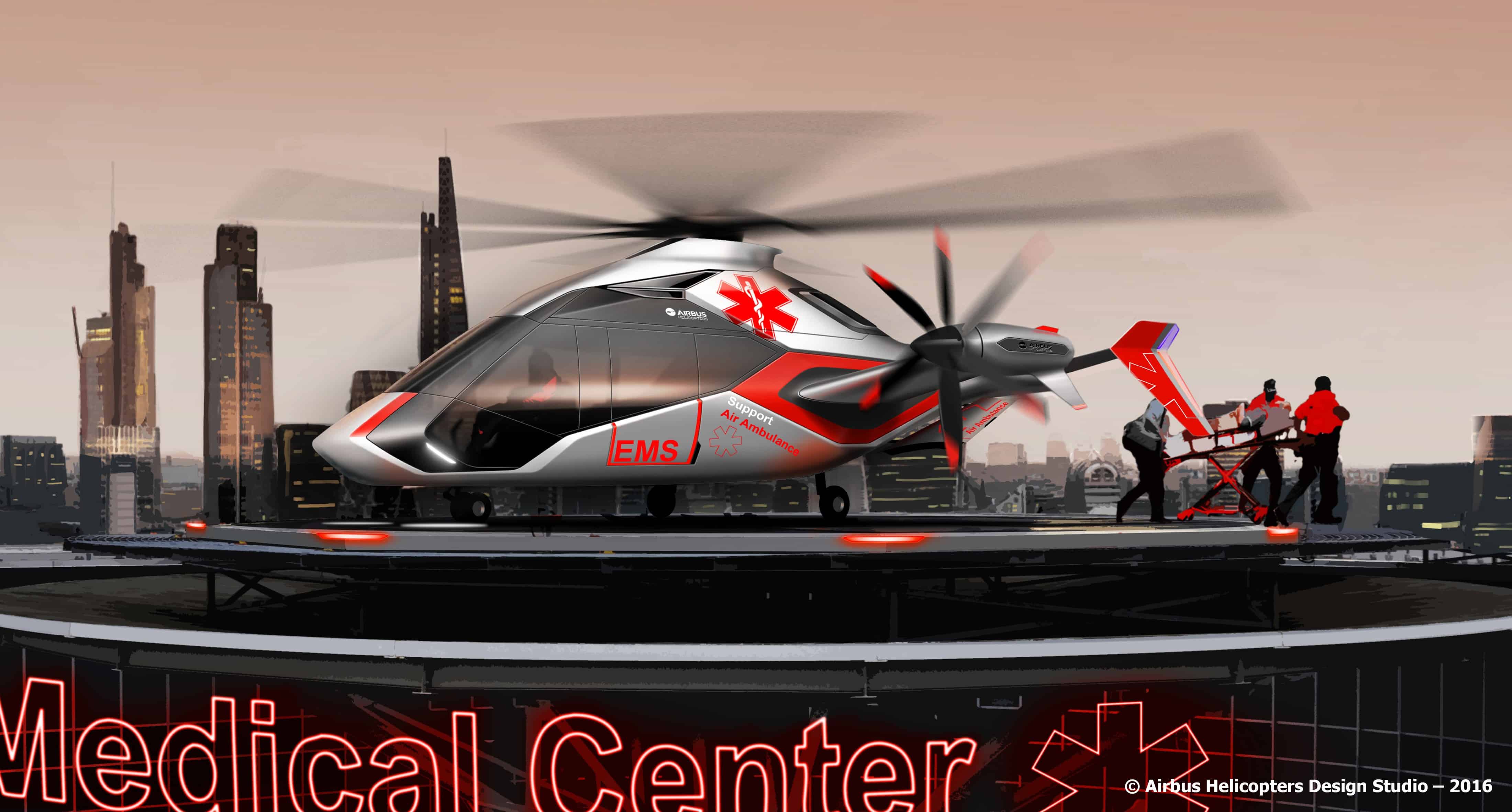
And for all ‘ambulance’ vehicles, on land, sea or in the air, speed is vital. The quicker an injured person is brought to a medical facility, the more likely they are to receive treatment and survive and/or make a full recovery. Medical staff refer to the ‘golden hour’; the time in which seriously injured patients should receive treatment to give them the best chance of recovery. The golden hour is particularly vital when surgery or transfusions are required.
This is an important sector for all helicopter makers, and one where Airbus has particular goals. “Our ambition is to become the benchmark of the rotorcraft industry and as such we are willing to drive a bold vision for the future of helicopter transportation,” said Jean-Brice Dumont, chief technical officer at Airbus Helicopters, in June last year, when the design for the Clean Sky 2 rotorcraft was frozen. “Our Clean Sky 2 demonstrator will not only be about going faster, it will help make speed smarter by seeking the best trade-off between cost-efficiency, sustainability and mission performance. We want to break the cost barrier usually associated with increased speed and range, and pave the way for new mission sets for 2030 and beyond, by providing crucial emergency or door-to-door transportation services to European citizens where they need it most.”
Speed is a practical development aimed at a specific set of applications of the aircraft; which is why the Clean Sky 2 helicopter is referred to as a mission demonstrator.
Moreover, if an aircraft can fly faster on the same amount of fuel or less, it can fly further. This increased range would make the aircraft attractive for applications such as ferrying staff to offshore platforms, which, as hydrocarbon resources become scarcer and offshore winds blow harder, now tend to be located further and further from land than they were in previous years.
In terms of performance, the figures for the new helicopter are impressive. Airbus claims it will fly 50 per cent faster than a conventional helicopter, and be able to cover twice as much area in an hour’s flight. Moreover, it says it will cost 25 per cent less per nautical mile to run than a conventional helicopter, and use 15 per cent less fuel at speeds of 180kt (knots; 334km/h, 207mph) than a conventional helicopter at 130kt (241km/h/150mph).
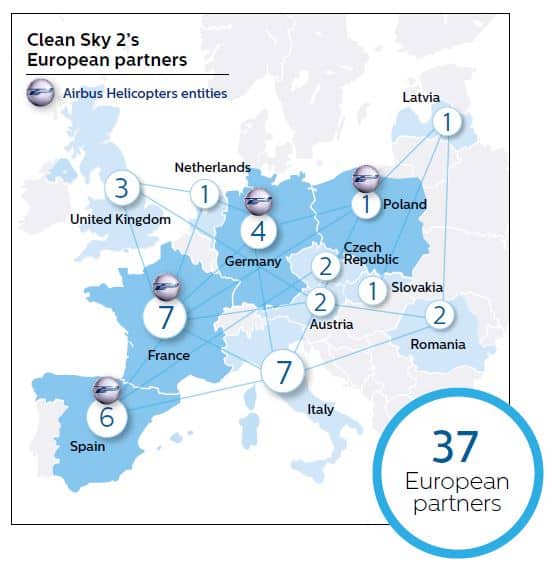
The increased economy of the helicopter results from its adherence to the principles of the Clean Sky project and is derived from a fundamental change in the way the helicopter is propelled and kept aloft. Rather than generating thrust from the main rotor by twisting the blades of the propeller along their axes to change their angle of attack to the air, the craft is equipped with two forward-facing propellers placed at the end of short forward-angled wings that sit on top of the aircraft cabin and underneath the main rotor, positioned so that their rotation does not interfere with that of the main rotor. These are driven by the same engine as the main rotor, by means of gearboxes and chain drives (another innovative aspect of the project).
In fast flight, the main rotor provides only lift (in fact, about 60 per cent of the total lift, with the rest provided by the wings) while the thrust is provided by the propellers. Because of this, the Clean Sky 2 rotorcraft is classified as a hybrid helicopter. “In technical terms, we unload the rotor; when it is providing only lift it needs to do much less work,” Tomasz Krysinski, Airbus head of innovation, explained. The reduction in load on the main rotor engine, the extra lift provided by the wings as the helicopter moves forward, and the efficiency of the forward-facing propellers all combine to reduce the fuel use compared with a conventional helicopter of similar size and weight, despite the extra velocity. Additional advantages of using wings include the ability to climb in a nose-up position; increasing manoeuvrability; and an increase in the possible payload of the aircraft. The helicopter is still capable of hovering, climbing and descending vertically, and has all the other characteristics that make helicopters so useful. Meanwhile, removing the loading from the main rotor reduces the vibration imparted to the cabin by the rotor, making for smoother and more comfortable flight; a major advantage when transporting casualties. It may also make the helicopter attractive as an executive transport.
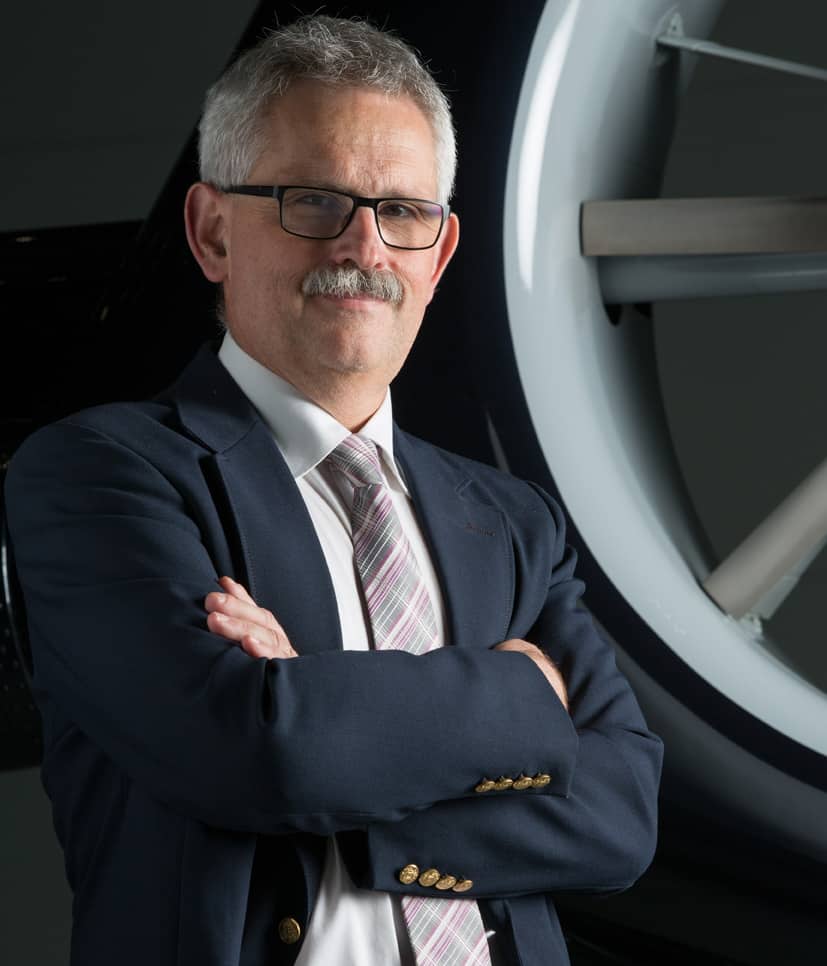
Another difference between the Clean Sky 2 rotorcraft and a conventional helicopter is that it does not have a tail rotor. In a conventional helicopter this counteracts the torque on the airframe imparted by the main rotor engine, which would otherwise spin the fuselage of the aircraft around. In the new aircraft, this function is fulfilled by the forward-facing propellers, as well as imparting thrust.
The Clean Sky 2 rotorcraft is a development of an Airbus prototype called the Eurocopter X3. This featured the same mechanism but a slightly different design; the propellers were mounted structures more like nacelles than wings.
The rotors have also been moved away from the cabin doors. First flown in 2010, the X3 achieved an unofficial helicopter speed record of 263kt (487km/h, 303mph) in 2013. Like the new aircraft, the X3 had no tail rotor.
While the X3 was built using components from standard helicopters, the Clean Sky 2 rotorcraft is designed from scratch, according to Krysinski, who was also chief engineer on the X3 project. “X3 was only ever intended as a development prototype; there was never any intention for it to be a production aircraft,” he said. “For the new aircraft, manufacturing is a part of the project, so if we do go ahead with a production version we have a clear pathway to how we would produce it.”
Other differences between the X3 and the Clean Sky rotorcraft are obvious at a glance. The Clean Sky craft is angular and streamlined; a result of its design process and wind-tunnel development, and another contributing factor in its speed. “The styling also allows us to have a flat floor, which is of course very valuable for its role as a rescue vehicle,” Krysinski said. “Some of the work we are doing on fixed-wing aircraft is also being used in this project. Use of composites throughout the airframe and fuselage reduces the weight of the aircraft, which also helps to improve its fuel economy.”
The rotorcraft project has very strong UK links, according to Krysinski, both in its execution and its inspiration. “A big factor in the design of the X3 and Clean Sky 2 rotorcraft was a machine called the Fairey Rotodyne,” he told The Engineer. Designed in the 1950s and covered extensively in this journal at the time, the Rotodyne was also a hybrid rotorcraft, with forward-facing propellers providing thrust in flight. Its main rotor was driven only on take-off, landing and for hovering by small jet nozzles mounted on the tips of the blades burning a mixture of compressed air (generated by compressors driven by the main engine) and fuel; during flight the rotor auto-rotated to provide lift in the same way as the rotor of an autogyro or gyro plane. Only a single prototype of the Rotodyne was built and, although it was successful in trials, it did not attract commercial orders, possibly because of loud noise from the blade tip jets. Despite its cancellation in 1962, the Rotodyne broke performance records of the day, achieving speeds of 175kt (324km/h, 200mph) in flight and executing turns that conventional helicopters could not match. It is now seen as a lost opportunity, as it would have had a role of an ‘aerial bus’, which is still largely unavailable.
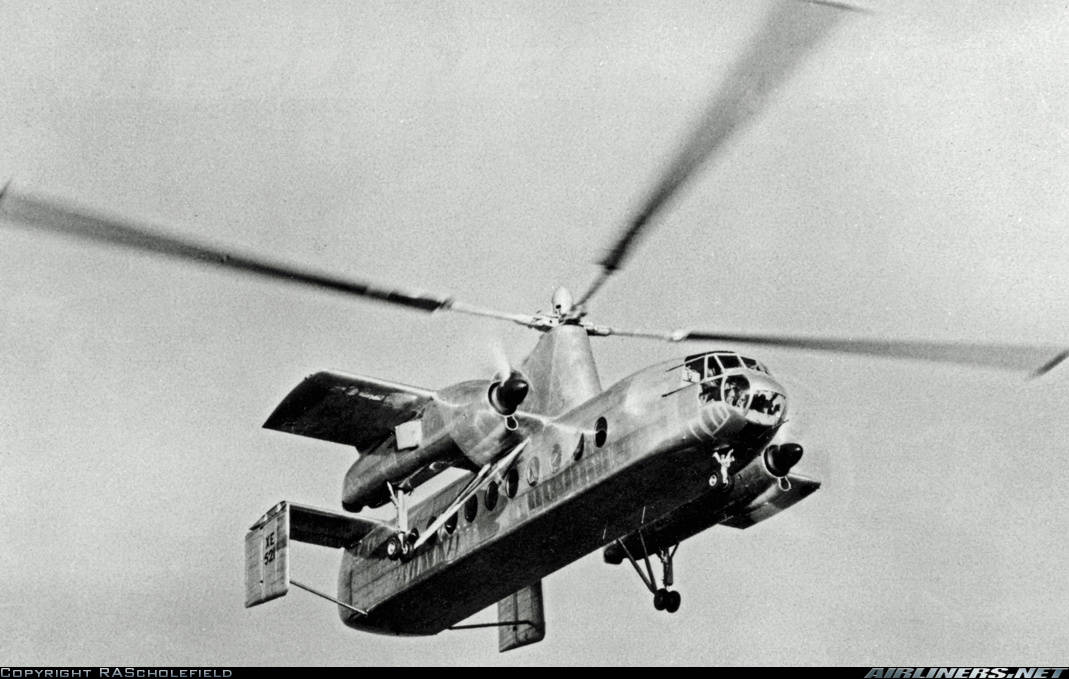
The consortium of institutions contributing to development of the new rotorcraft also has strong UK element, Krysinski said. “This is very much a European project. The UK is very strong in aerospace development, particularly in composites and aerodynamics, as well as in the aerospace supply chain, and these are things that Airbus is very keen to draw upon.”
The consortium includes a project called ASTRAL (Advanced Wing Structure for Rotorcraft Additional Lift) at the University of Nottingham, which involves developing design, testing and manufacturing regimes for the wings of the rotorcraft, using concepts such as laminar airflow across the wing surface to maximise their efficiency. The University of Bristol, meanwhile, is working on the rotor development, including regenerative rotor brakes, while Airbus’s facility at Filton (also near Bristol) has been working on wing design with the Nottingham team and on wind-tunnel testing on the model airframe, which was last completed in summer 2016. Rolls-Royce, meanwhile, is involved in development of the high-compression engine used on the aircraft. The aircraft actuators, crucial components in a helicopter as they control the angle of the rotor blades, are also developed in the UK, by Deeside-based Triumph Actuation Systems.
The high-compression engine was tested last year. A 4.6-litre V-8 configuration piston engine, it runs at 1,800 bar, and uses design features similar to those found in aerobatic engines and racing cars, notably dry-sump management for the lubricating oil. The engine is made from aluminium castings, with connecting rods made from titanium, and pistons and liners made from steel. Its performance goals include a 53 per cent reduction in NOx compared with conventional helicopter engines.
Krysinski says the new rotorcraft represents a big leap, but that expectations should be tempered. “We have to remember tilt rotorcraft, [such as] the Boeing Osprey, were developed in the 1980s, and are still only available in military variants,” he said. Flight testing is expected to begin in 2019, and it is only after these trials that the company will make a decision on whether to take the rotorcraft into production.




Report highlights significant impact of manufacturing on UK economy
I am not convinced that the High Value Manufacturing Centres do anything to improve the manufacturing processes - more to help produce products (using...